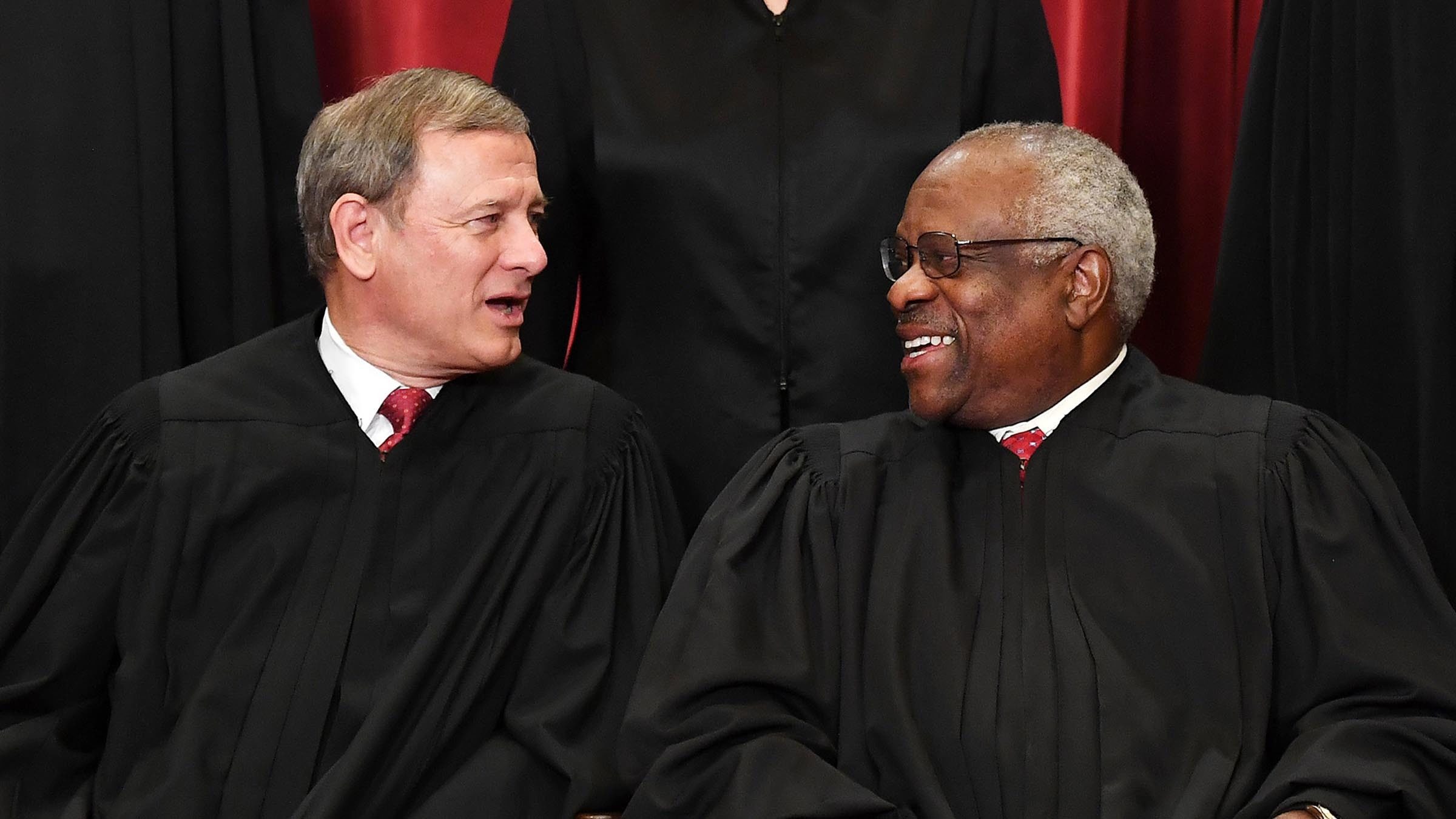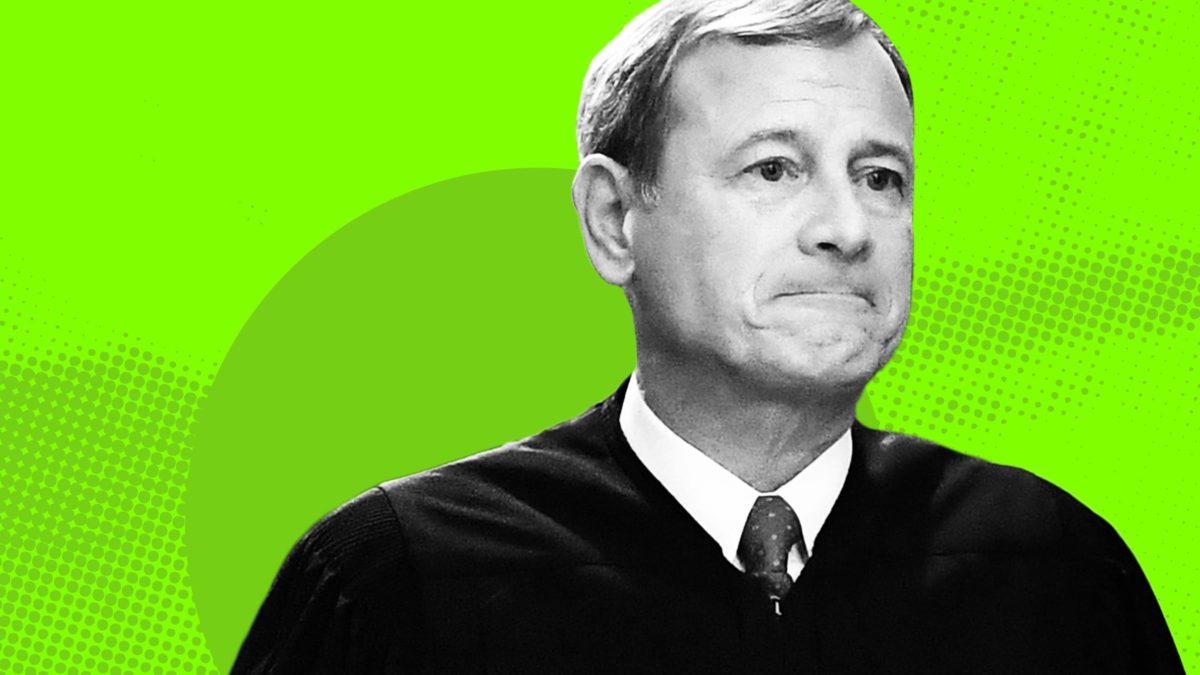For two years, Chief Justice John Roberts had it all. The 2018 replacement of longtime swing justice Anthony Kennedy with longtime Republican operative Brett Kavanaugh made Roberts the improbable owner of the Court’s powerful median vote. Suddenly, the Court’s chief found himself able to determine the outcome of just about any politically-charged case. As Slate’s Mark Joseph Stern put it, more than a decade after his confirmation, the Roberts Court had truly “arrived.”
That is, until it left again. After the 2020 death of Justice Ruth Bader Ginsburg, the decline of Roberts’ dominance was as hasty as the confirmation of Ginsburg’s successor, Justice Amy Coney Barrett. The resulting 6-3 conservative supermajority meant that even Roberts’ occasional departures from the conservative party line didn’t matter as long as the rest of his colleagues stuck together.
Court-watchers quickly noted Roberts’ diminished role, painting a portrait of a man isolated from his colleagues and relegated to the sidelines in his own stadium. In Bloomberg, Harvard Law School professor Noah Feldman wrote that Roberts had been “abandoned by his fellow conservatives” for refusing to “drop his judicial restraint when it’s convenient,” but hoped that history would “vindicate” Roberts for this courageous choice.
But casting Roberts in the role of tragic hero neglects the fact that, like the lead in many a Greek tragedy, Roberts has his own hubris to blame. Throughout his tenure as Chief Justice, he has marshaled the Court in service of a hyperconservative agenda to eviscerate voting rights, empower conservative culture warriors, and supercharge corporate power. John Roberts isn’t some passive victim of unlikely circumstances that reduced him to premature irrelevance. He has been eclipsed by the same conservative legal movement he’s championed for his entire life.

Getty Images
Roberts was honing his reputation as a principled rule-of-law enthusiast well before he briefly became the Court’s median vote. In his book The Most Dangerous Branch, David Kaplan writes that before Roberts’s confirmation to the Court, he’d already developed such a friendly rapport with D.C. reporters that people joked that he must go to lunch three times a day. When Roberts presided over a handful of moderate-seeming outcomes in 2020, the legal press corps was ready to lavish him with a fresh round of fawning praise. In the The Atlantic, Jeffrey Rosen praised Roberts as “just who the Supreme Court needed” to “maintain the Court’s bipartisan legitimacy at a time when the other branches have lost their own.” Akhil Reed Amar, Noah Feldman’s main rival in the contest for America’s most out-of-touch liberal law professor, took to The New York Times to declare that under Roberts’ leadership, “There is no aisle on the Supreme Court bench, literally or figuratively.”
But while journalists were busy hyping the Roberts Court for its magnanimous restraint, Roberts has been busy rewriting the law. Aided by this brand of credulous media coverage, his efforts to build a durable conservative legal movement have been a raging success: His Court has restructured America’s political system to favor conservatives with decisions gutting the Voting Rights Act and flooding the field with billionaire donations. It has gradually whittled away at regulations and legal rules meant to protect the public from corporate behemoths. It has altered the balance of church and state, aggrandizing Christianity at the expense of other religious groups with conspicuously less pull in Republican Party politics.
The Court is an emboldened conservative juggernaut today because John Roberts has spent his career working to build it.
Roberts’ pursuit of a right-wing agenda predates his services as a federal judge. After clerking for then-Associate Justice William Rehnquist, whose chambers have been described as “a Federalist Society before there was a Federalist Society,” Roberts went on to become a foot soldier in the Reagan administration. There, he was a staunch opponent of a bill to reauthorize the Voting Rights Act, churning out memos that cast the legislation as “constitutionally suspect” and cautioned that discrimination claims “should not be made too easy to prove.” In 2000, Roberts was part of George W. Bush’s legal team in Bush v. Gore, making him one of three sitting justices who assisted the GOP in one of the Court’s most infamous and brazenly partisan cases. The Court is an emboldened conservative juggernaut today because John Roberts has spent his career working to build it.
Roberts’s recent disagreements with his conservative colleagues—earlier this year, they left him behind in order to to undermine state COVID-19 regulations and preserve Texas’ flagrantly unconstitutional anti-abortion law—have prompted some commentators to wonder who the real leader of the Court is now. Many have landed on Justice Clarence Thomas, the most senior justice in a Roberts-free conservative majority; others point to Barrett, in whom some identify a Roberts-like fondness for moderation despite the fact that she keeps casting decisive votes in 5-4 victories. Even Justice Brett Kavanaugh’s name has been floated—yes, by Noah Feldman again—even though he’s never been in charge of anything that didn’t involve inverting someone over a keg.
The truth is that the wiggle room that a six-justice majority affords means that everyone will get a chance to plunge their fingers into their favorite flavor of conservative policy-making pie. Clarence Thomas is now a pen stroke away from eviscerating Roe v. Wade. Thanks to a major Second Amendment case argued last week, Justice Samuel Alito might soon be able to fulfill his fantasy of strolling down the streets of New York City with a gun strapped to each limb. Justice Neil Gorsuch is salivating at the chance not only to block the Biden administration from regulating carbon emissions, but also to block future Democratic presidents’ ability to regulate much of anything at all. And for all the breathless attention the occasional disagreements will receive, Roberts remains as free as ever to wage his decades-long war on the ability of Black and brown people to participate in democracy. He just won’t enjoy the privilege of assigning the majority opinion as often as he’d like.
Pundits are right to observe that Roberts has lost the handle on the Court. But they are wrong to bemoan this as some tragic loss for the rule of law, because the fact that John Roberts has been gobbled up by a monster he helped create should not be a surprise to anyone familiar with the general concept of monsters. For every opinion that guts the rights of people whom big corporations, Republican politicians, or Christian conservatives don’t like, Roberts still shoulders the blame, no matter how he votes. He did this to himself.

